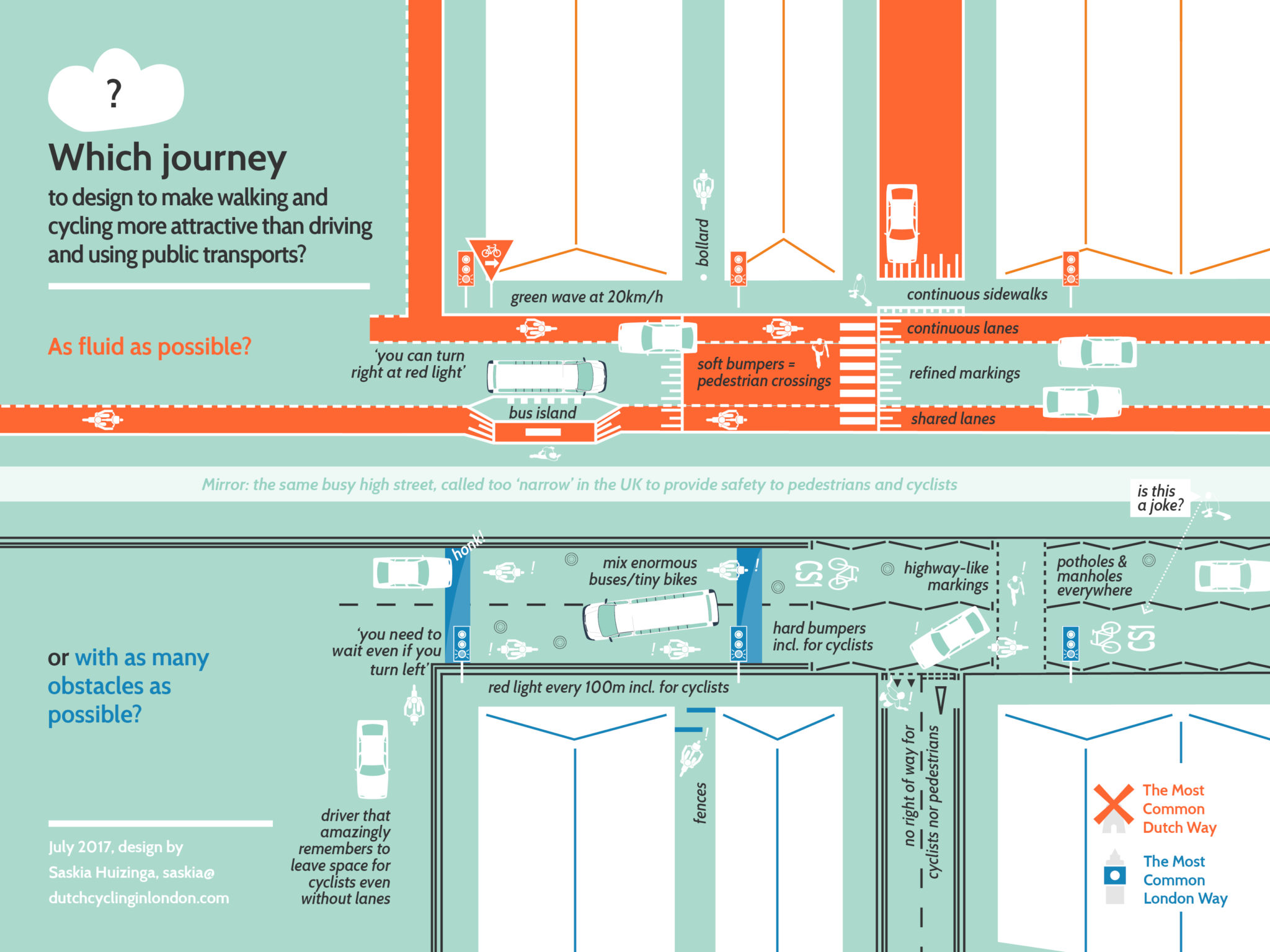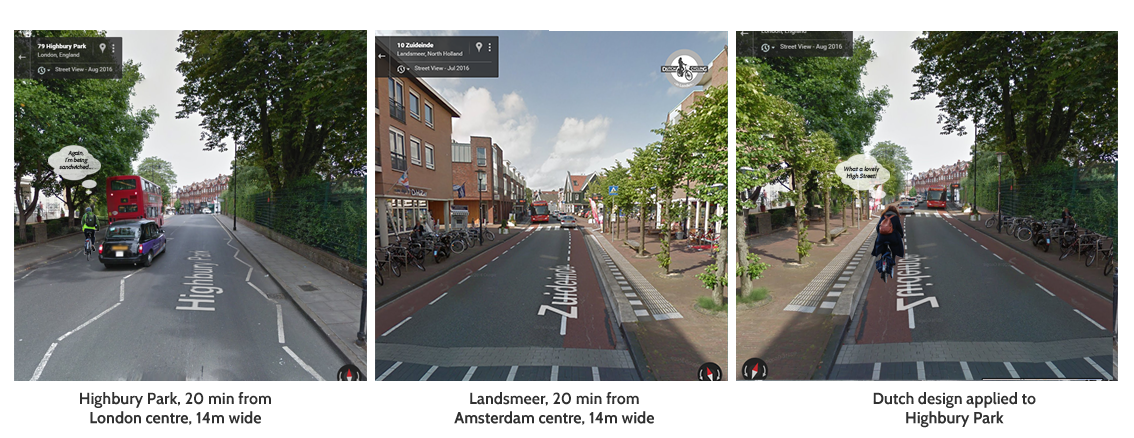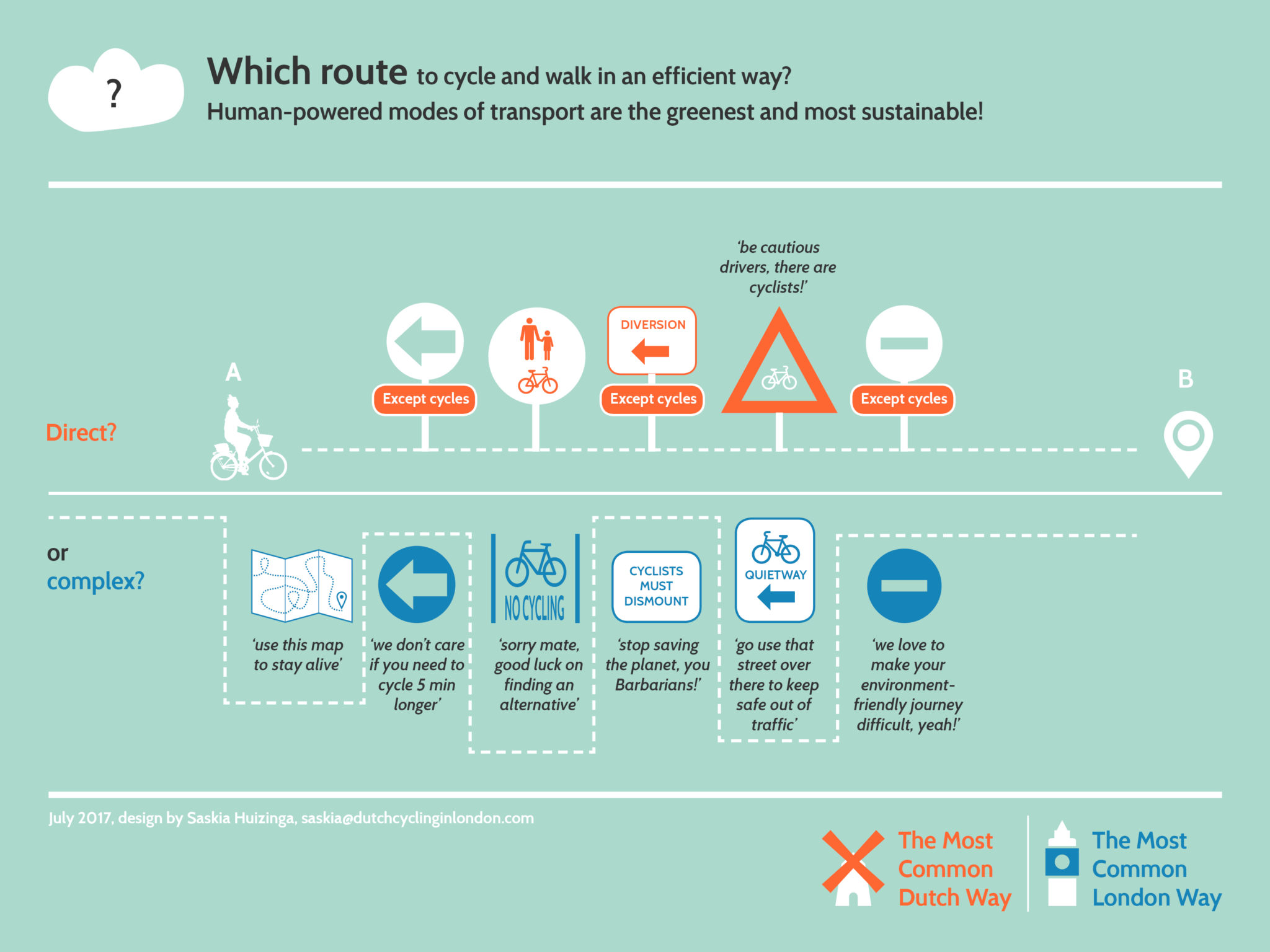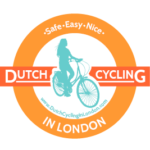DISCOVER
Which journey to design for making walking and cycling more attractive than driving and using public transports?
Key ingredients to encourage cycling are to make cyclists’ journeys direct, fluid and safe. Learn more about why historical high streets have an important role to play, why making them safe for cyclists is the most urgent thing to do and why cyclists shouldn’t be pushed aside.
Golden rule
FLUIDITY. Just like pedestrians, cyclists are using their own energy to move around. Just like pedestrians, they are objectively (not relatively) slower than motorised vehicles. This is why they need as less stops as possible to find their mode of transport worth it in terms of time-consumption. It is essential that they have right of way over motorists at junctions. How does this rule work in the UK?
photo@fietschic

High streets are the most direct routes
While there are many residential streets that are safe to cycle in London, main roads and high streets often remain dangerous for cyclists to use, due to the volume and speed of traffic. They are essential to promote easy cycling though because they are – unlike Cycle Superhighways and Quietways – the natural and most direct ways to move around in London and they have many local facilities and businesses that cyclists can successfully use and support.
London Cycling Design Standards suggest that busy streets should have mandatory cycle lanes. These busy streets are defined as having a traffic distribution of more than 500 vehicles per peak hour or a speed limit above 20mph, which is the case of many London high streets, even when signs state differently. Unfortunately, most of them have currently no lanes. In the Netherlands, all busy roads include bike lanes with as minimum red paint and white stripes. If not, they are proper shared streets which involve efficient traffic calming elements. They also usually provide continuous sidewalks for pedestrians and other features describe above that make pedestrians. and cyclists, journeys as fluid as possible.. These things were the first things cities were encouraged to do by the Dutch government.
Narrow streets are no excuses
We can hear often that high streets are too narrow and busy in London to use the Dutch street design. First of all, the Netherlands is one of the most dense countries in the world so the Dutch are used to cope with business. Secondly the Netherlands has plenty of smaller streets that get busy as well, especially in villages in the Randstad, villages that are quite comparable to London villages.
Look at the differences between these two busy high streets below that are both 14m wide and located 20 minutes from London/Amsterdam centre.
The benefits of this design?
The street gets a human scale where slow traffic is prioritised and encouraged. Drivers finally respect the 20mph. Small trees, street furniture – such as bike racks on large sidewalks for school children and nearby church visitors – create soft edges and are calming elements. There’s a lot of space for pedestrians.
Lanes for cyclists are clear and dominant with red schist being the national code for bike lanes in the Netherlands. Striped lines make it clear that vehicles can drive on lanes if required.
The bus stop is elevated to help wheelchairs and strollers to get into the bus. With vehicles driving slower, noise and pollution are reduced.
In terms of material and colours, see how the pavement is permeable to let water enter ground and how the red colour catches the attention, gives a warm atmosphere while matching with the local character brick-buildings.

Browse other differences
Sign up to our newsletter
A project supported
by the Academy of Urbanism
A project initiated
by Saskia Huizinga





